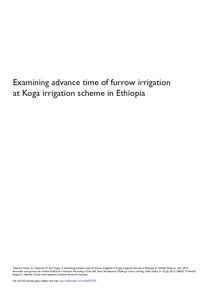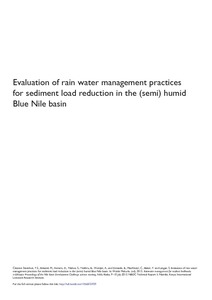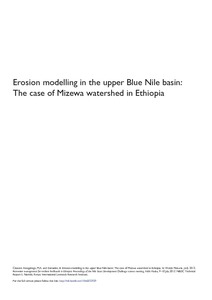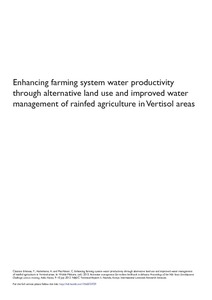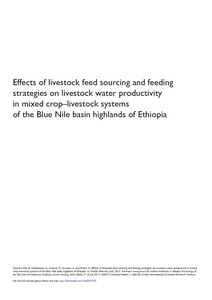Location
Vision, mission and strategy
ILRI's strategy 2013-2022 was approved in December 2012. It emerged from a wide processof consultation and engagement.
ILRI envisions... a world where all people have access to enough food and livelihood options to fulfil their potential.
ILRI’s mission is... to improve food and nutritional security and to reduce poverty in developing countries through research for efficient, safe and sustainable use of livestock—ensuring better lives through livestock.
ILRI’s three strategic objectives are:
- with partners, to develop, test, adapt and promote science-based practices that—being sustainable and scalable—achieve better lives through livestock.
- with partners,to provide compelling scientific evidence in ways that persuade decision-makers—from farms to boardrooms and parliaments—that smarter policies and bigger livestock investments can deliver significant socio-economic, health and environmental dividends to both poor nations and households.
- with partners,to increase capacity among ILRI’s key stakeholders to make better use of livestock science and investments for better lives through livestock.
This is ILRI’s second ten-year strategy. It incorporates a number of changes, many based on learning from the previous strategy (2000–2010, initially produced in 2000 and modified in 2002), an interim strategy (2011–2012) and an assessment of the external and internal environments in which the institute operates.
Members:
Resources
Displaying 391 - 395 of 1152Examining advance time of furrow irrigation at Koga irrigation scheme in Ethiopia
Koga irrigation scheme was developed to irrigate about 7004 ha. Furrow irrigation is the recommended method for the distribution of water. However, furrow irrigation has inherent inefficiencies due to deep percolation on the upper end and runoff at the lower end of the furrow. These losses depend on furrow length, furrow gradient, surface roughness, stream size and cutoff time. These factors play significant role to influence the advance time of irrigation and the operation rule of the scheme. This paper examines the advance time of furrow irrigation at Koga.
Evaluation of rain water management practices for sediment load reduction in the (semi) humid Blue Nile basin
With the construction of the new Renaissance Dam at the Ethiopian Sudan border, reducing sediment load in the Blue Nile is becoming increasingly important. Past attempts of decreasing sediment concentrations have been only partially successful. In this paper, we will examine the temporal distribution of sediment generation within small watersheds and systematically compare this with the observed sediment concentration at various watershed scales using the Parameter Efficient Distributed (PED) model.
Erosion modelling in the upper Blue Nile basin: The case of Mizewa watershed in Ethiopia
The main objective of this research was to study soil erosion and sediment yield in Mizewa watershed using SWAT model. The study was involved hydrological and erosion modelling using primary data collected in the watershed. Hydrological and meteorological data were collected from the stations installed in the watershed by IWMI in collaboration with Ministry of Water and Energy and National Meteorological Service Agency. Suspended sediment data was collected at Mizewa River in the watershed, used for sediment rating curve development.
Enhancing farming system water productivity through alternative land use and improved water management of rainfed agriculture in Vertisol areas
Waterlogged Vertisols are amongst the high potential soils where management interventions could result in positive impacts. This study utilized soil, climate and crop and livestock productivity data and models to demonstrate intensification strategies which increase crop–livestock system productivity and to understand the effects of alternative land use and water management options on water productivity in the Vertisols areas.
Effects of livestock feed sourcing and feeding strategies on livestock water productivity in mixed crop–livestock systems of the Blue Nile basin highlands of Ethiopia
Inefficient management and use of water is unanimously the most single constraint of agricultural production of Ethiopia. The study was conducted to assess the effect of livestock feed sourcing and feeding strategies on livestock water productivity (LWP) in mixed crop–livestock production systems of the Blue Nile Basin in Ethiopian Highlands. Three districts representing diverse agricultural farming systems were considered. Each district further stratified to different farming systems. Multi-stage stratified random sampling technique was employed to select farm households.


